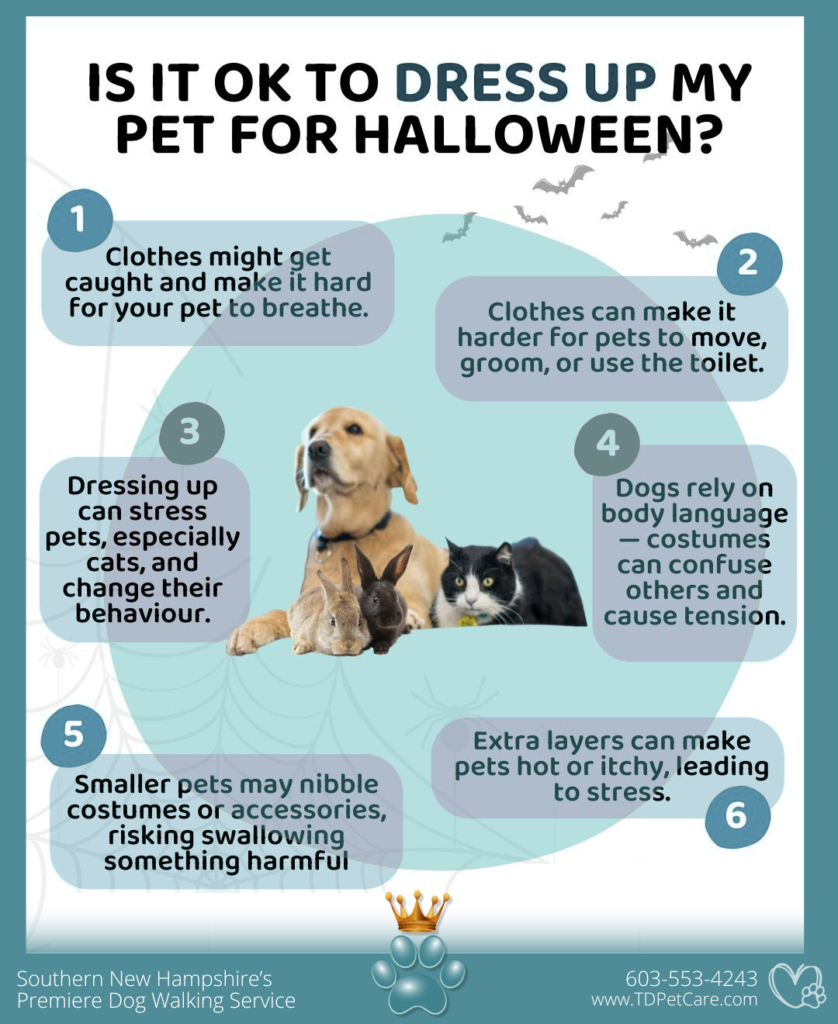Halloween is one of the most exciting times of the year — costumes, candy, and creative fun all around! And for many pet parents, it’s tempting to include their furry family members in the festivities. After all, who can resist a dachshund dressed as a hot dog or a cat in a bat costume?

But before you reach for that adorable outfit, it’s important to think about how your pet feels. While dressing up might seem harmless, many animals find costumes stressful, uncomfortable, or even unsafe. As loving owners, our goal should always be to keep our pets happy, healthy, and comfortable — no matter the occasion.
Here’s what to keep in mind this Halloween:
1. Breathing and Movement
Costumes can sometimes restrict breathing or make it harder for pets to move freely. Tight clothing, straps, or accessories may get caught on furniture or leashes, causing discomfort or even injury. Make sure anything you put on your pet allows them to move, stretch, and breathe easily.
2. Basic Needs
Pets need to walk, groom, and use the bathroom comfortably. If a costume gets in the way of those basic functions, it’s best to skip it. What’s fun for you might be frustrating for them.
3. Stress and Behavior
Dressing up can cause anxiety — especially in cats or nervous dogs. Costumes change how pets look, smell, and feel, which can throw them off and affect their behavior. If your pet seems stiff, hides, or freezes up, take the costume off right away.
4. Communication Confusion
Pets, especially dogs, communicate through body language. A costume can cover their tail, ears, or posture, making it harder for other animals (and even people) to read their cues. This can lead to misunderstandings or tension during social gatherings or trick-or-treating events.
5. Safety Hazards
Smaller pets may nibble on fabric, buttons, or accessories, risking choking or swallowing something harmful. Always supervise your pet if they’re wearing any kind of outfit, and avoid costumes with small or dangling pieces.
6. Temperature and Comfort
Extra layers can cause pets to overheat — especially in warmer climates or indoors. Look for lightweight, breathable fabrics if you do decide to dress them up, and limit the amount of time they wear the costume.
A Better Way to Include Your Pet
If your pet doesn’t love dressing up, there are still plenty of fun ways to include them in the Halloween spirit:
- Try a festive collar or bandana instead of a full outfit.
- Take spooky-themed photos with seasonal backdrops or props.
- Treat them to a special Halloween-themed toy or snack.
The Bottom Line
Your pet’s comfort and safety come first — every time. While some pets enjoy wearing costumes for short periods, many prefer to stay natural. Pay attention to their cues, keep things simple, and make sure the only scares this Halloween are the fun kind!

Recent Comments